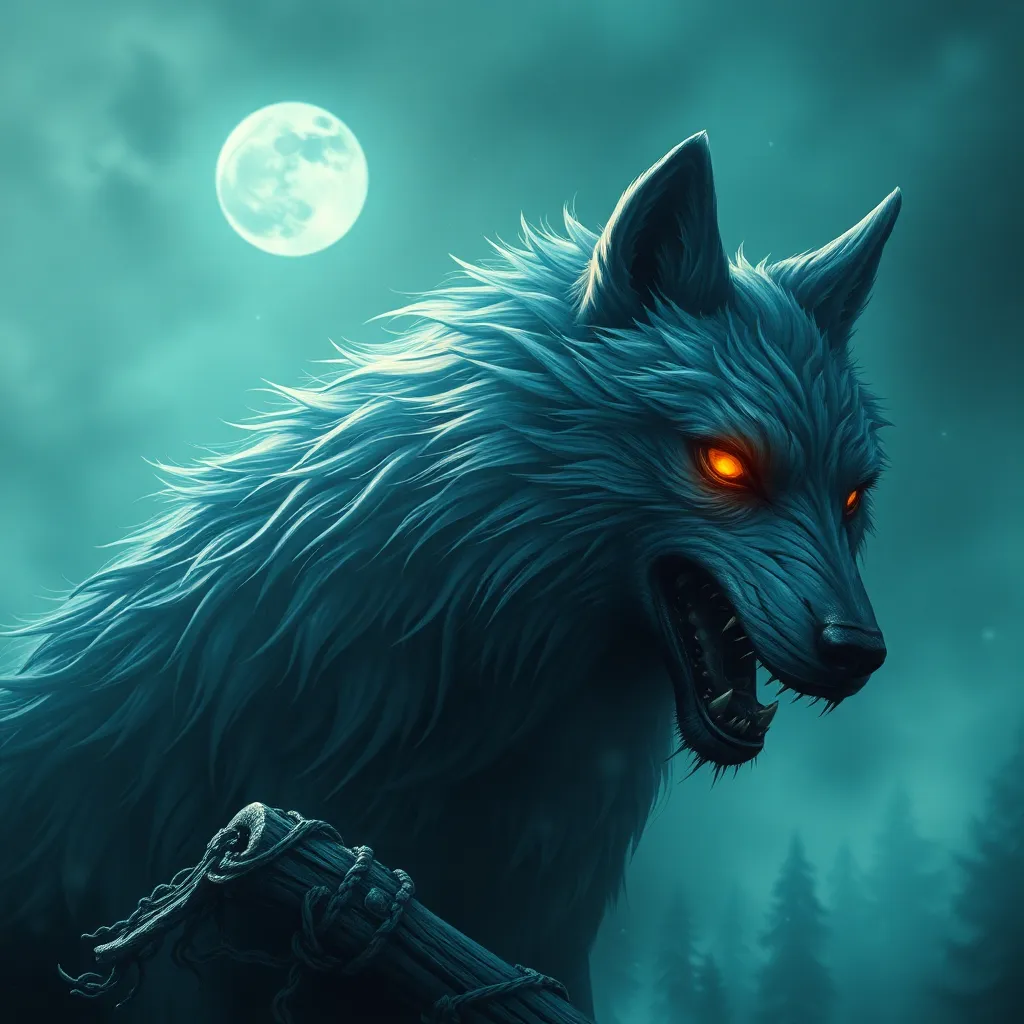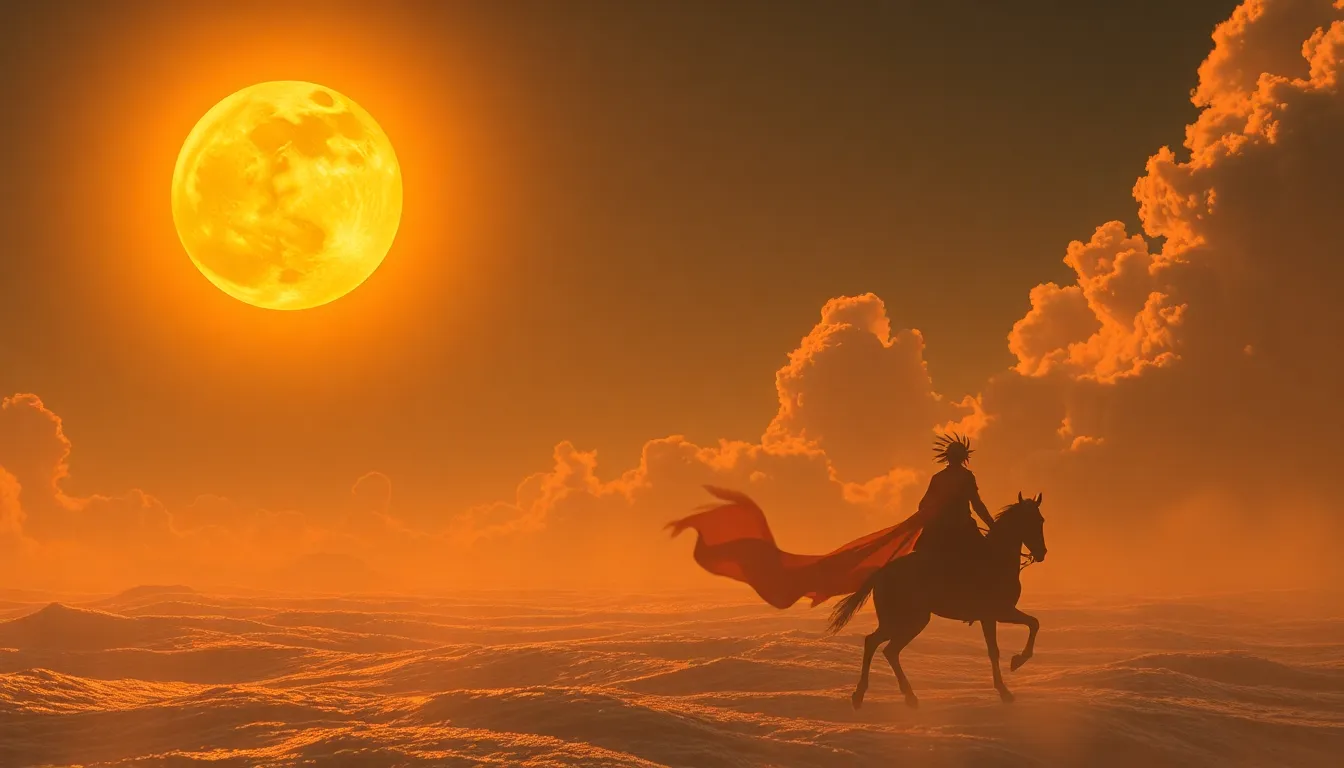The Wolf’s Legacy: Fenrir’s Impact on the Norse Worldview
I. Introduction
In the rich tapestry of Norse mythology, Fenrir stands out as one of the most compelling figures, embodying chaos, destruction, and an undeniable connection to the natural world. As a monstrous wolf, Fenrir is not just a character in myth; he is a symbol of the fears and values held by the Norse people. This article aims to explore Fenrir’s influence on the Norse worldview, examining his origins, myths, and the broader cultural significance of wolves in Norse society.
II. Fenrir: The Mythical Wolf
Fenrir’s story begins with his formidable lineage. Born of the trickster god Loki and the giantess Angerboda, Fenrir carries within him the weight of prophecy and fate from the moment of his birth.
A. Origin and lineage of Fenrir
Fenrir’s parentage is significant in understanding his nature:
- Parents: Fenrir’s father, Loki, is known for his cunning and deceit, while his mother, Angerboda, is a giantess associated with darkness and danger.
- The prophecy surrounding his birth: It was foretold that Fenrir would play a crucial role in the catastrophic events of Ragnarök, the end of the world in Norse mythology.
B. Physical characteristics and symbolism of Fenrir
Fenrir is often depicted as a giant and fearsome wolf, embodying the raw power of nature. His immense size and strength symbolize the uncontrollable aspects of the wild, making him a representation of both fear and respect within Norse culture.
III. Fenrir in Norse Mythology
Fenrir’s presence in Norse mythology is marked by several key stories that illustrate his significance and the attitudes of the gods towards him.
A. Key myths and stories involving Fenrir
Two primary myths involving Fenrir highlight his role in the Norse cosmology:
- Binding of Fenrir: The gods, fearing Fenrir’s potential for destruction, decided to bind him. They tricked him into being bound with a magical ribbon called Gleipnir, made from six impossible ingredients. This act reveals the gods’ anxiety about fate and their attempts to control it.
- Fenrir’s role in Ragnarök: During Ragnarök, Fenrir breaks free from his bindings and joins the giants in their battle against the gods, ultimately killing Odin, the chief of the gods. This act signifies the inevitability of fate and the cyclical nature of life and death.
B. Interpretations of Fenrir’s actions in myths
Fenrir’s actions in these myths can be interpreted in various ways, reflecting the complexities of his character. Some view him as a villain, while others see him as a tragic figure bound by prophecy, illustrating the Norse concept of fate and the struggle against it.
IV. The Symbolism of the Wolf in Norse Culture
The wolf, as a creature, holds a dual significance in Norse culture, embodying both destruction and loyalty.
A. Wolves as symbols of chaos and destruction
In many tales, wolves are viewed as harbingers of chaos. Fenrir, as the ultimate wolf, embodies this chaotic nature, representing the uncontrollable forces of fate and destruction.
B. Contrast with wolves as symbols of loyalty and strength
Conversely, wolves are also seen as symbols of loyalty, often representing pack dynamics and the strength found in unity. This duality reflects the Norse understanding of nature as both nurturing and threatening.
C. Fenrir as a representation of duality in nature
Fenrir’s character encapsulates this duality, being both a destroyer and a creature bound by destiny, illustrating the complexities of nature and existence.
V. Fenrir’s Role in the Concept of Fate and Destiny
Fenrir’s existence is deeply intertwined with the Norse concepts of fate and destiny, which are central to the culture’s worldview.
A. The inevitability of Fenrir’s prophecies
From his birth, Fenrir is marked by prophecy, suggesting that certain events are fated to occur regardless of attempts to avert them. This inevitability is a recurring theme in Norse mythology.
B. Understanding Norse fatalism through Fenrir’s story
The tales of Fenrir illustrate the Norse belief in fatalism, where the characters are often caught in a web of destiny, unable to escape their fated ends.
C. Fenrir’s impact on the Norse understanding of time and destiny
Through Fenrir’s myth, the Norse people pondered the nature of time itself, recognizing that the past, present, and future are interconnected, culminating in the cyclical events of Ragnarök.
VI. Fenrir’s Legacy in Norse Art and Literature
Fenrir’s impact extends beyond mythology into art and literature, influencing the creative expressions of the Norse culture and beyond.
A. Fenrir’s representation in Viking Age artifacts
Various Viking Age artifacts, such as carvings and jewelry, feature motifs of wolves, reflecting the significance of Fenrir and the broader symbolism of wolves in their society.
B. Fenrir in modern adaptations of Norse mythology
In contemporary literature and media, Fenrir has been reimagined in various forms, from novels to films, often symbolizing rebellion against fate or the embodiment of primal instincts.
C. Fenrir’s influence on contemporary literature and pop culture
Modern adaptations continue to explore Fenrir’s character, enriching his narrative and allowing audiences to engage with the themes of chaos, loyalty, and the struggle against destiny.
VII. Fenrir and the Natural World
The wolf, particularly Fenrir, serves as a reflection of the Norse relationship with the natural world, embodying the wild and untamed aspects of life.
A. The wolf as a reflection of Norse relationships with nature
Wolves were both feared and revered, representing the power of nature and the necessity of respecting its forces.
B. Fenrir’s representation of the wild and untamed aspects of life
As a symbol of the wild, Fenrir embodies the unpredictability of nature, reminding the Norse people of their vulnerability and dependence on the natural world.
C. Ecological perspectives on the wolf in Norse mythology
From an ecological standpoint, the wolf’s role in the ecosystem parallels the Norse understanding of balance within nature, where every creature has its place in the grand tapestry of life.
VIII. Conclusion
In summary, Fenrir’s multifaceted impact on the Norse worldview is profound, representing not only the chaos and destruction associated with wolves but also the themes of loyalty, fate, and nature’s duality. His legacy continues to resonate, influencing modern interpretations of Norse mythology and the cultural narratives surrounding wolves. As we reflect on Fenrir’s story, we recognize the enduring significance of wolves in shaping human understanding of the wild, the inevitable, and the intertwined destinies of all living beings.



